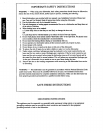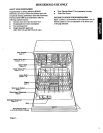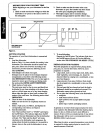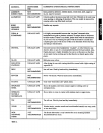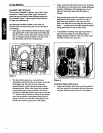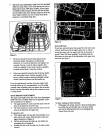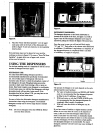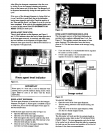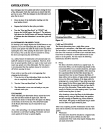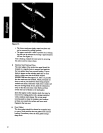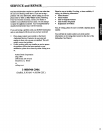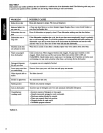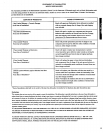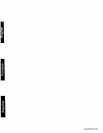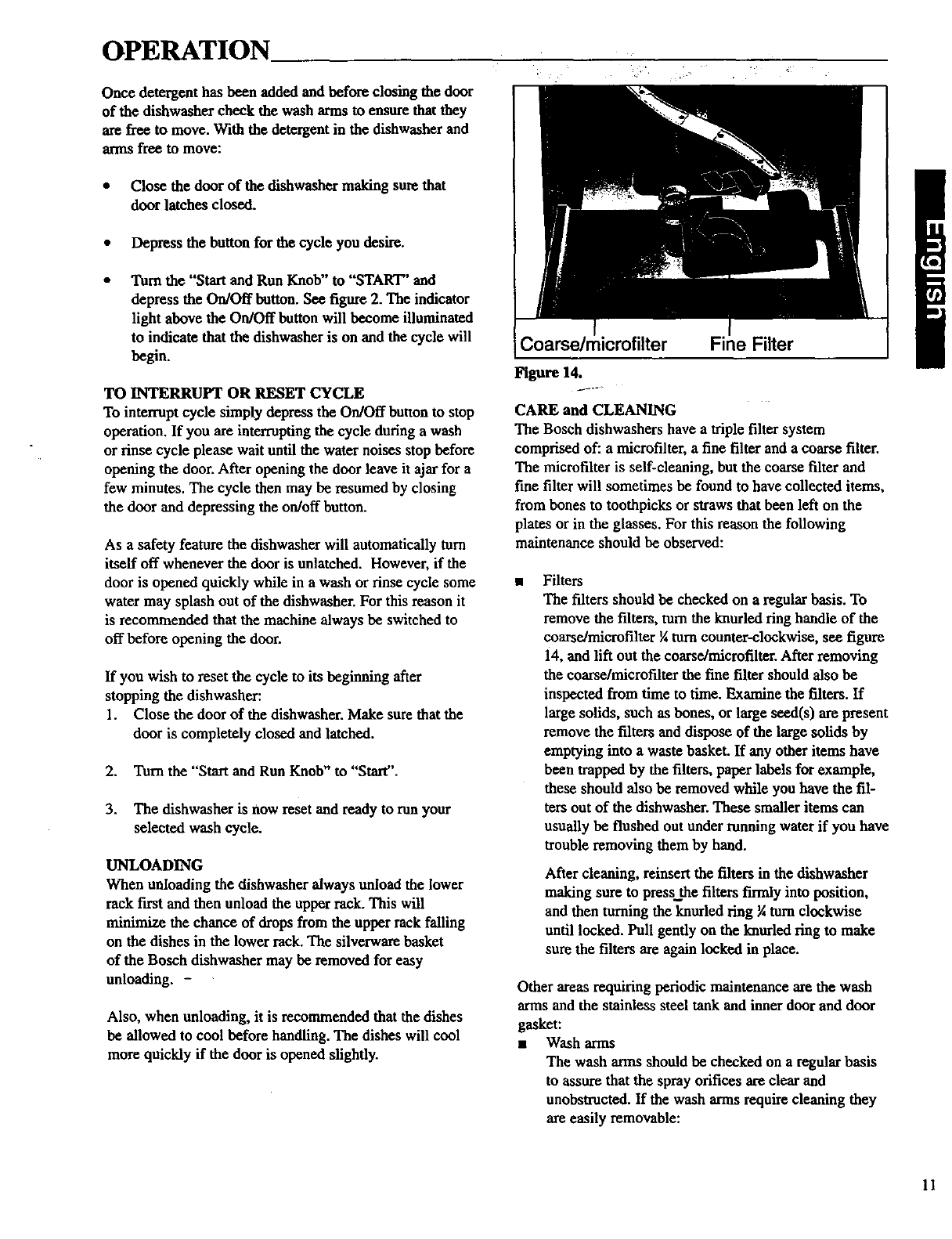
OPERATION
Once detergant has been added and before closing the door
of the dishwasher chock the wash arms to ensure thatthey
are free to move. With the detergent in the dishwasher and
arms free to move:
• Close the door of the dishwasher making sure that
door latches closed.
• Depress the button for the cycle you desire.
Turn the "Start and Run Knob" to "START" and
depress the On/Off button. See figure 2. The indicator
light above the On/Off button will become illuminated
to indicate that the dishwasher is on and the cycle will
begin.
TO INTERRUPT OR RESET CYCLE
To interruptcycle simply depress the On/Off buttonto stop
operation. If you are interruptingthe cycle during a wash
or rinse cycle please wait until the water noises stop before
opening the door. After opening the door leave it ajarfor a
few minutes. The cycle then may be resumed by closing
the door and depressing the on/off button.
As a safety feature the dishwasher will automatically turn
itself off whenever the door is unlatched. However, if the
door is opened quickly while in a wash or rinse cycle some
water may splash out of the dishwasher. For this reason it
is recommended that the machine always be switched to
off before opening the door.
If you wish to reset the cycle to its beginning after
stopping the dishwasher:
1. Close the door of the dishwasher. Make sure thatthe
door is completely closed and latched.
2. Turn the "Start and Run Knob" to "Start".
3. The dishwasher is now reset and ready to ran your
selected wash cycle.
UNLOADING
When unloading the dishwasher always unload the lower
rack first and then unload the upper rack. This will
minimize the chance of drops from the upper rack falling
on the dishes in the lower rack. The silverware basket
of the Bosch dishwasher may be removed for easy
unloading. -
Also, when unloading, it is recommended that the dishes
be allowed to cool before handling. The dishes will cool
more quickly if the door is opened slightly.
Coarse/microfilter Fine Filter
Figure 14.
CARE and CLEANING
The Bosch dishwashers have a triple filter system
comprised of: a microfilter, a fine filter and a coarse filter.
The microfilter is self-cleaning, but the coarse filter and
fine filter will sometimes be found to have collected items,
from bones to toothpicks or straws that been left on the
plates or in the glasses. For this reason the following
maintenance should be observed:
Filters
The filters should be checked on a regular basis. To
remove the filters, turn the knurled ring handle of the
coarse/microfilter ¼turn counter-clockwise, see figure
14, and lift out the coarse/microfilter. After removing
the coarseYmicrofilter the fine filter should also be
inspected from time to time. Examine the filters. If
large solids, such as bones, or large seed(s) are present
remove the filters and dispose of the large solids by
emptying into a waste basket. If any other items have
been trapped by the filters, paper labels for example,
these should also be removed while yon have the fil-
ters out of the dishwasher. These smaller items can
usually be flushed out under running water if you have
trouble removing them by hand.
After cleaning, reinsert the filters in the dishwasher
making sure to press.the filters firmly into position,
and then turning the knurled ring ¼turn clockwise
until locked. Pull gently on the knurled ring to make
sure the filters are again locked in place.
Other areas requiring periodic maintenance are the wash
arms and the stainless steel tankand inner door and door
gasket:
• Wash arms
The wash arms should be chocked on a regular basis
to assure that the spray orifices are clear and
unobstructed. If the wash arms require cleaning they
are easily removable:
11



